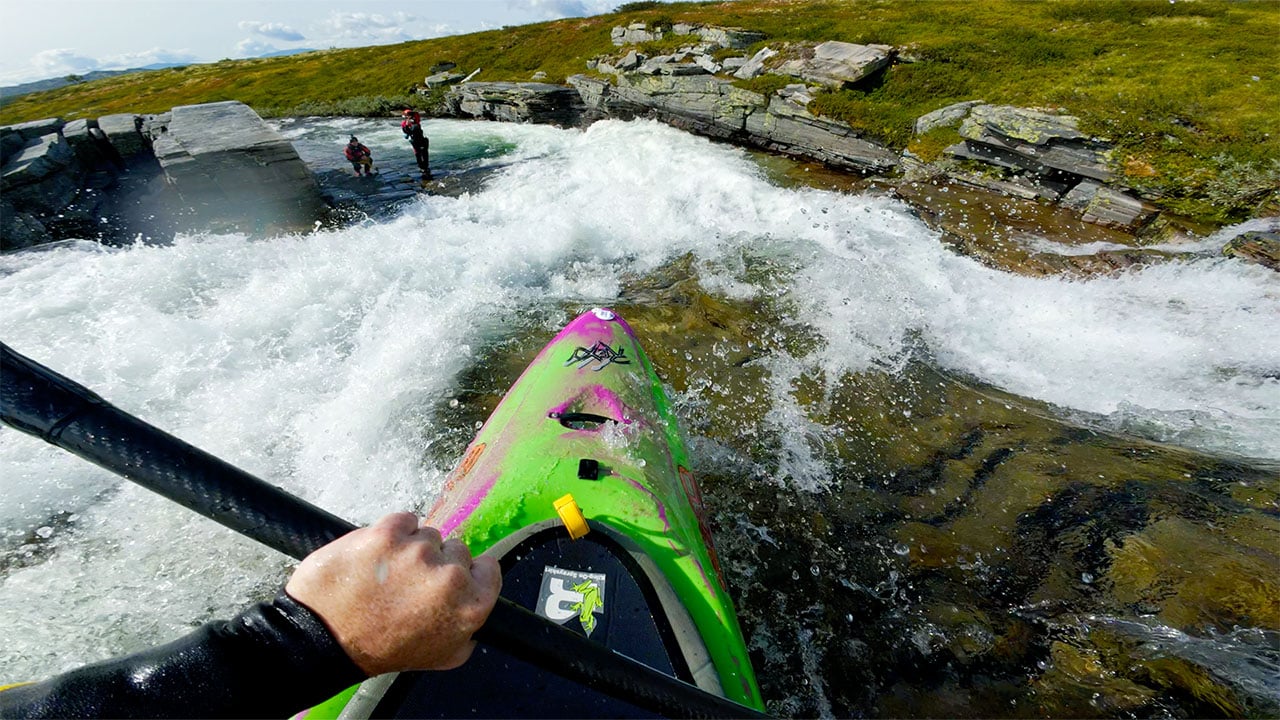
Replay: With the launch of our GoPro Hero 13 review, we thought it prudent to look back and see what GoPro's competition has been up to this year.
Article: DJI has updated its action camera series with the release of the DJI Osmo Action 4. Simon Wyndham took it through some white water in Norway to see how it performed.
I have to admit that the DJI Osmo Action 4 was a surprise release for me this year. The Action 3 was a very solid action camera, and I had assumed that DJI might leave it a little longer before upgrading it, but upgrade it they did.
What's new?
From the outside, the Osmo Action 4 looks almost exactly the same as the previous model. However, there's been a lot of changes inside and to the general specs. For one thing, the Action 4 boasts a much larger 1/1.3" sensor with a much larger pixel pitch than its predecessor. In practice this means better low light performance, albeit at the expense of lower resolution stills (10MP vs 12MP on the Action 3). DJI claims a one stop advantage in low light over the Action 3.
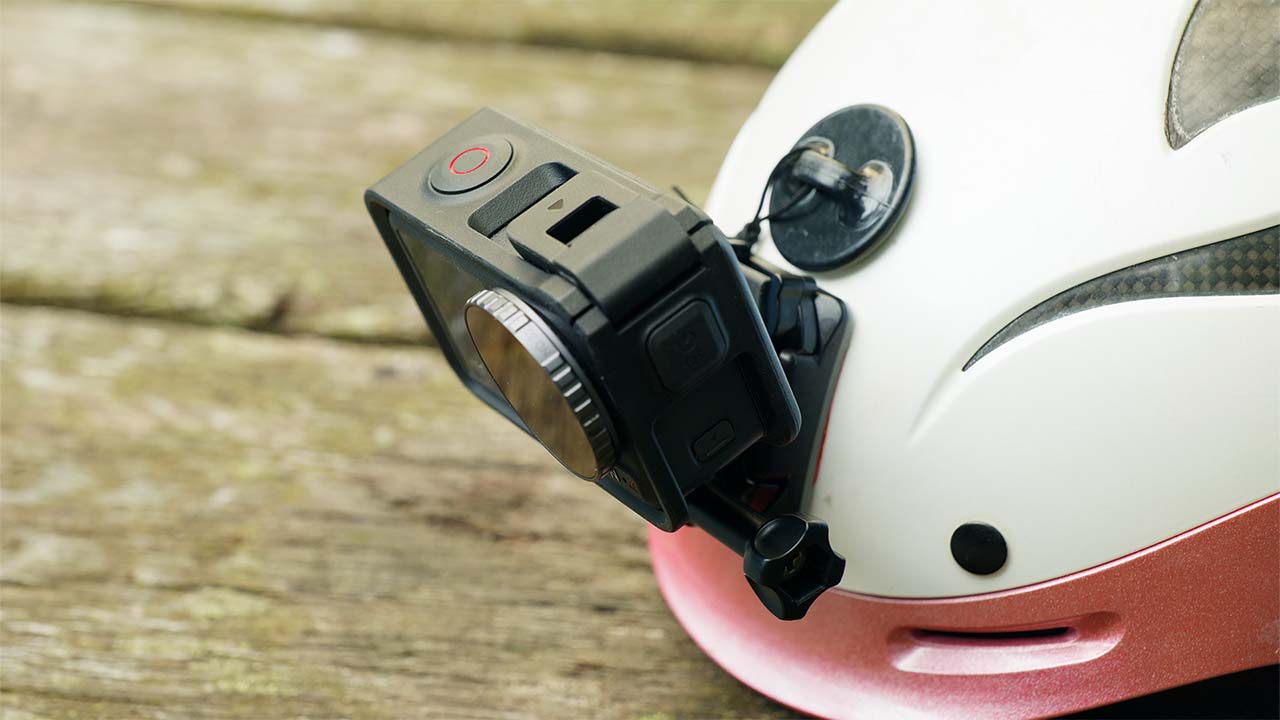
The Osmo Action 4 ready to take on the elements
The Action 4 also boasts better weather sealing and waterproofing, being capable of going down to depths of 18m without the need for a housing.
Power users will appreciate the addition of the D-log M 10-bit colour profile, as well as the ability to control the image parameters, such as adjusting sharpening and how much noise reduction is applied.
The Action 4 uses the same magnetic mount system as the Action 3, which makes switching between mounts very quick and easy. This is one of the main advantages of the DJI camera over the GoPro if you are going to use the camera on a lot of different mounts throughout the day.
General impressions
The Action 4 looks very similar to the Action 3, bar being a darker shade of grey. Also of note is the lens protector, which although looking similar to the previous camera, uses a different sized thread, so the two are not interchangeable. This is as a result the of the different lens due to the larger sensor on the new camera. Thankfully, DJI has also made the rubber surround a part of the lens protector ring, rather than detachable like the Action 3. Previously, it was very easy to lose it or to become detached.
Apart from the different lens protector size, the rest of the body keeps the same layout as the Action 3. Overall it's a high quality product, and feels very solid in construction.
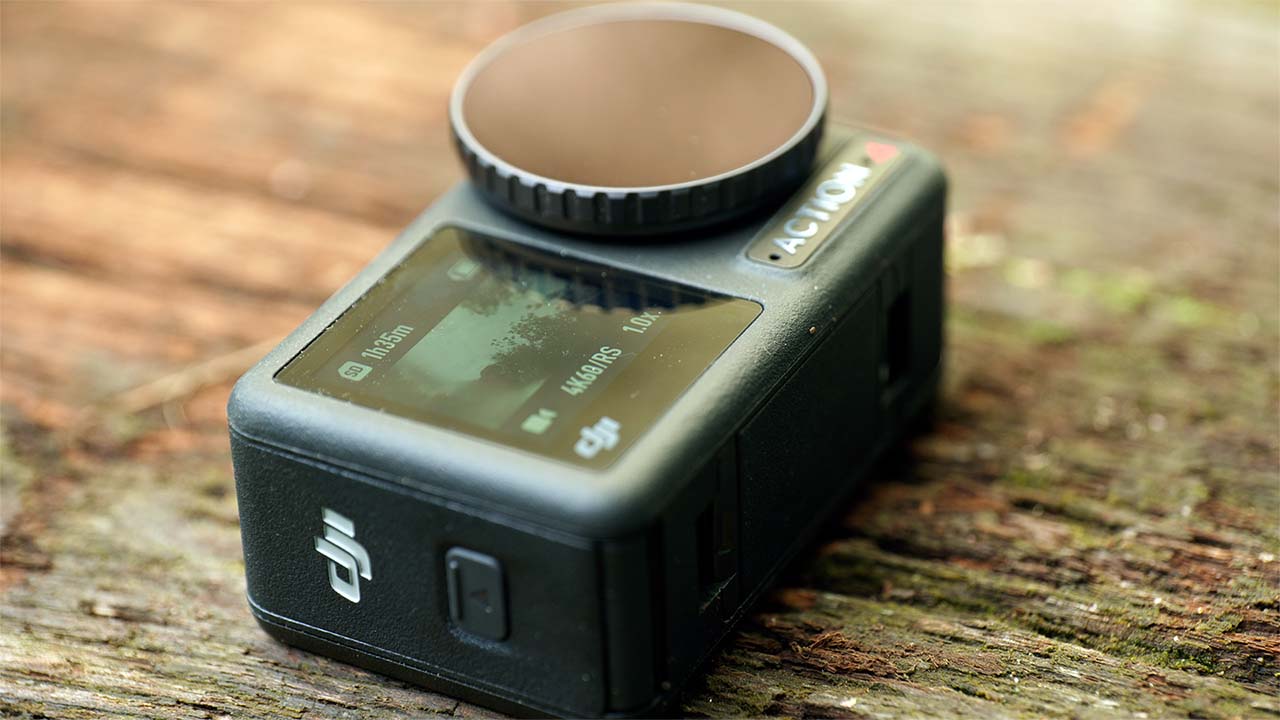
A nice touch, literally, is the front touch screen
Using the Osmo Action 4
The first thing that struck me about the Action 4 is how quickly it turns on. Using the quick record function, when the camera is off you press record to begin recording and then press it again to stop and automatically power down, and all is noticeably faster than the GoPro HERO11.
It's only a matter of a second or so, but this can make the difference in a fast moving environment from capturing the shot or missing it. The user interface will be familiar to anyone who has used the previous cameras. But, for those who haven't, it's extremely clean and easy to understand. The touch screens, both front and back, are also very responsive.
A great touch is that when you are using the quick record function, the camera gives a three second countdown before powering down, so you have the chance to cancel it and keep recording (although rather annoyingly it won't automatically power down the next time you stop recording after doing this).
The Action 4 now has some pro set-up functions, so noise reduction can be switched off and sharpening reduced to zero. When combined with the D-Log M function and 10-bit colour, the Action 4 can be integrated much more easily with other professional cameras. ND filters can be added, although I would suggest being careful with them if you need to use the built in RockSteady stabilisation, which will work most effectively at shutter speeds of 180th/sec and above.
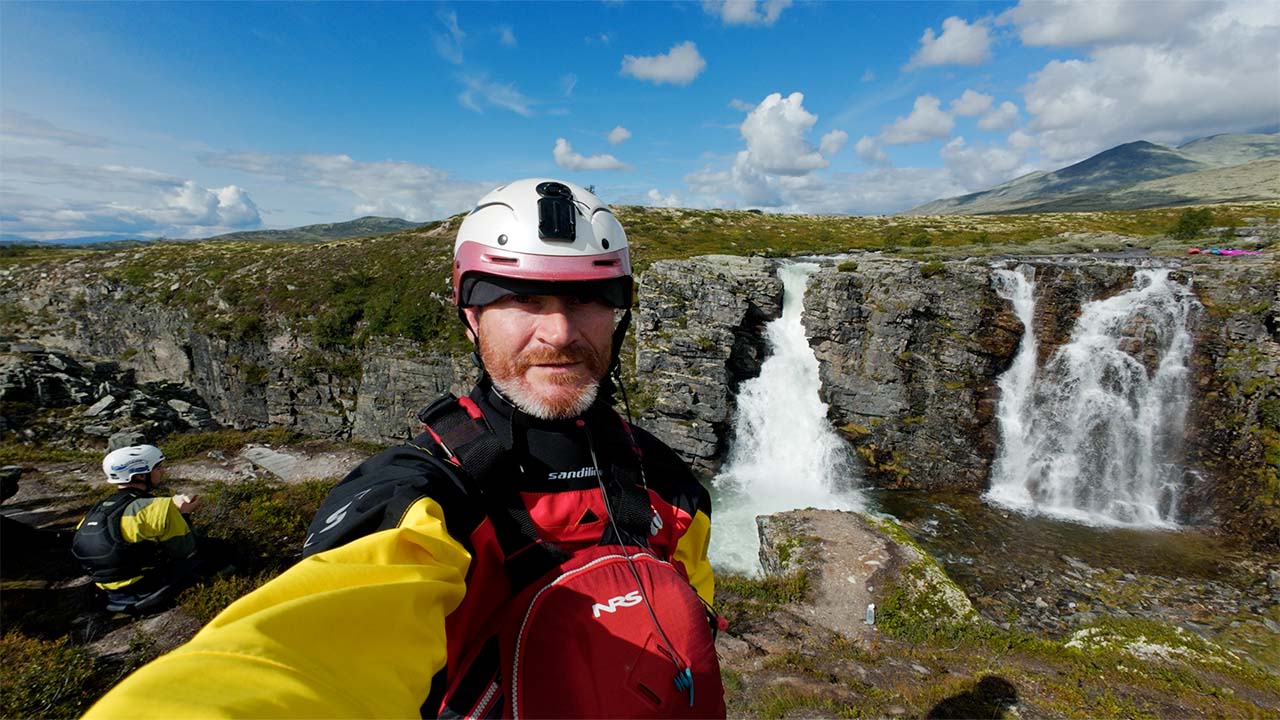
Colours from the Osmo Action 4 are great
Another option for stabilisation that the Action 4 offers is the ability to include gyro data within its video files. This data can then be used by certain third party software packages, such as Gyro Flow, to perform stabilisation in post. Doing this requires that the camera is placed into the 4K 4:3 aspect ratio using the 'wide' virtual lens setting, and RockSteady stabilisation turned off.
It has been suggested that this is a way to use slower shutter speeds in low light and still get good stabilisation. However, this would be a false assertion given that slower shutter speeds will produce motion blur from camera shake, which simply cannot be erased by stabilisation software. On the other hand, it does give more flexibility to FPV pilots who prefer to do stabilisation in software rather than to bake it in at the time of recording.
Battery life
A definite advantage that the Osmo Action 4 has over the GoPro is battery life. DJI promises around 155 minutes of recording time in 1080p down to -20 degrees c. 4K modes are not as lengthy, but in my experience I found the power usage of the camera to be extremely good. I did a long day on a remote river in Norway recently, and although I took spare batteries with me I never needed to use them.
Now, I'm possibly more selective about what and when I record with these cameras than a lot of people, but even still I was impressed at the durations I was getting from it.
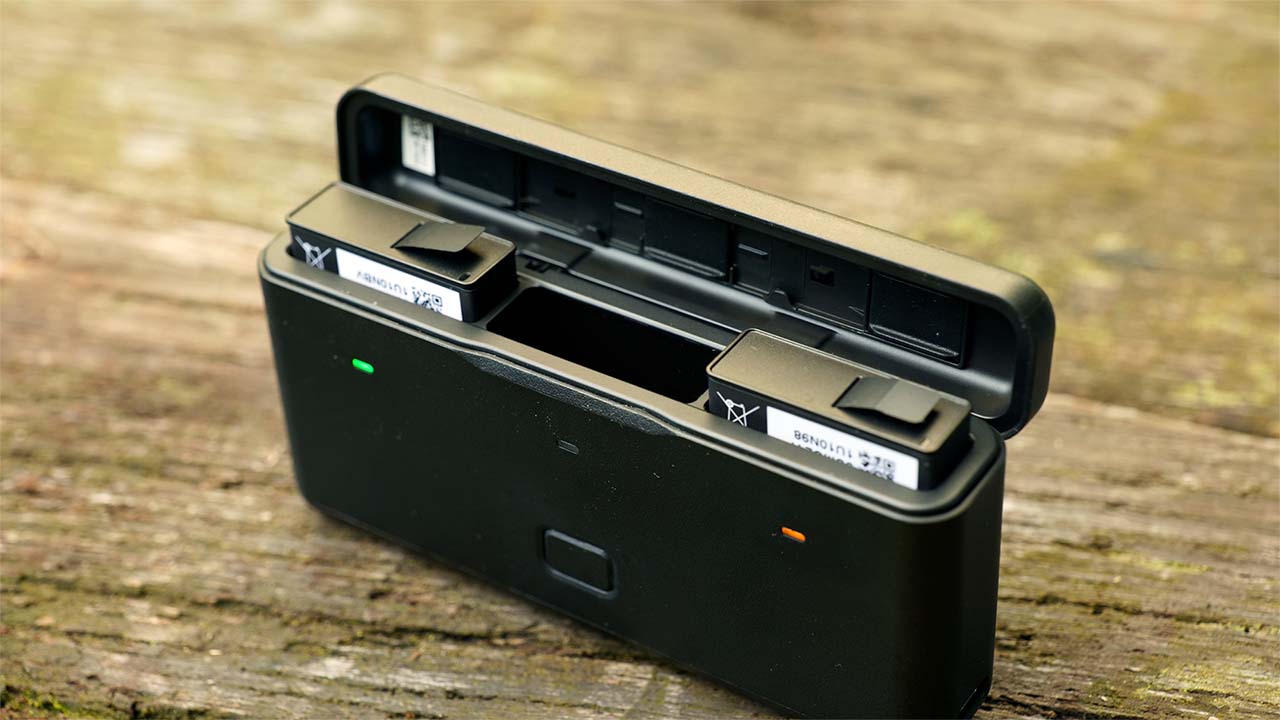
The Adventure Combo comes with a three battery charge case
DJI Osmo Action 4 conclusions
The Osmo Action 4 offers some advantages over the Action 3. Whether or not you should upgrade will depend on usage. If you want to use it as a stunt camera and need to match to other professional cameras, then the Action 4 is most certainly the way to go.
Overall I prefer the image of the Action 4 over the 3 thanks to the ability to tune the sharpening and noise reduction settings. The Ultra-wide mode is, once again, sublimely good and one of my favourite features of the DJI Action cameras.
My time testing the camera was curtailed somewhat thanks to a bit of a mishap. Whilst running the Stør Ula river in Norway, a shallow creek run, I went upside-down and the camera took a hard hit, resulting in the lens protector getting smashed. Unfortunately no replacements are currently in stock, so testing had to stop at that point, since I wasn't going to risk damaging the bare lens without protection.
I was impressed that the rest of the camera was completely unscathed, and the magnetic mount held firm, giving me more confidence in the camera's mounting system.
In post I found the image to be easy to grade from the D-log M setting. Reducing the noise reduction also means that shadow detail is more recoverable without the 'mush' that is often seen in dark regions on this genre of camera recording. Colours overall are pleasing and accurate when using the auto white balance setting, thanks to the white balance sensor on the front of the camera. Although I still prefer to set my white balance manually.
At £379 for the base camera, and £469 for the Adventure Combo, the DJI Osmo Action 4 represents good value compared with the competition. It offers rock solid performance, giving me no mishaps (other than my own!) during my time testing it, and the battery life is exceptionally good. The magnetic mounting system is one that should become a standard, due to how fast it is to change mounts, and the user interface is easy to use even if you aren't technically literate. Overall, I can highly recommend the Osmo Action 4 on your list of considerations for action cameras.
Review video
Watch the review video below, and then a personal highlights video using the Action 4 mixed with the GoPro HERO11 for comparison and a more creative grade.
Tags: Production Review Action cameras


Comments